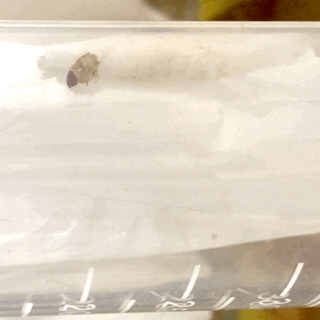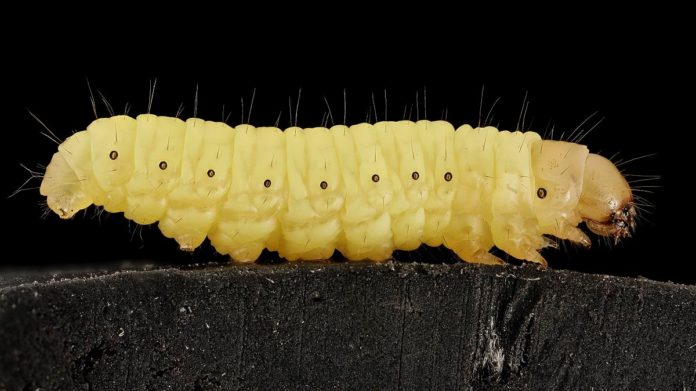Humans produce a whopping 300 million tonnes of plastic waste every year, a significant portion of which end up in our oceans. Recycling rates are generally poor and eliminating plastic responsibly remains a huge challenge.
When most types of plastic reach the sea, the larger fragments break up, but they don’t chemically break down into smaller molecules. Instead, they become microplastics, which wreak all kinds of havoc among marine life.
Now we may have an unusual ally in the fight: the lowly waxworm, a parasite found in beehives. In 2017, an amateur beekeeper in Spain discovered that they could digest plastic after she cleared them out of her own hives into a plastic bag. The larvae ate their way out and researchers were eager to explore the phenomenon further.
A new study published in Proceedings of the Royal Society B: Biological Sciences has expanded on this by developing a better understanding of their digestive process. The hope is that understanding the waxworm’s secret will help us develop large-scale tools to tackle the plastic pollution crisis.
Waxworms are caterpillar larvae of wax moths, and they don’t eat anything after emerging from their cocoons as adults. They eat an intensive amount of food during the larval stage so they can get by during their brief stint as adults when they mate and die.
Worms devour matchbook-size area in less than a week
In the lab, researchers from Brandon University observed that 60 waxworms were able to munch through 30 square centimetres of a polyethylene bag (the kind you find at the supermarket) in under a week. The waxworms’ waste products turned out to be glycol, a type of alcohol, though scientists are unsure what this could be used for.

In their tests, they found that the worms have special microorganisms in their gut microbiome that can decompose and process the plastic. They also found that the worms were able to survive up to a year on this stuff alone.
In another part of their experiments, they formed three groups of waxworms and put them on exclusive diets: honeycomb, plastic, and no food for control purposes. The waxworms on the plastic diet reportedly experienced an “increased microbial abundance” in their gut microbiome.
“Plastic-eating bacteria are known, but in isolation, they degrade plastics at a very slow rate,” said co-author Christopher LeMoine in the BrandonU press release. “Likewise, when we treated the caterpillars with antibiotics to reduce their gut bacteria, they were not able to degrade the plastic as easily. So it seems that there is a synergy between the bacteria and their waxworm hosts that accelerates plastic degradation.”
The waxworm may not be the only “plastivore” in the world, but they are particularly adept at what they do, hence the interest from researchers. Still, waxworms are not capable of getting through a high enough volume of plastic to curb the tide of the crisis.
“Worms that eat our plastic waste and turn it into alcohol sounds too good to be true. And in a way, it is,” said lead author Bryan Cassone in the press release.
“The problem of plastic pollution is too large to simply throw worms at. But if we can better understand how the bacteria works together with the worm and what kind of conditions cause it to flourish, perhaps this information can be used to design better tools to eliminate plastics and microplastics from our environment.”








































